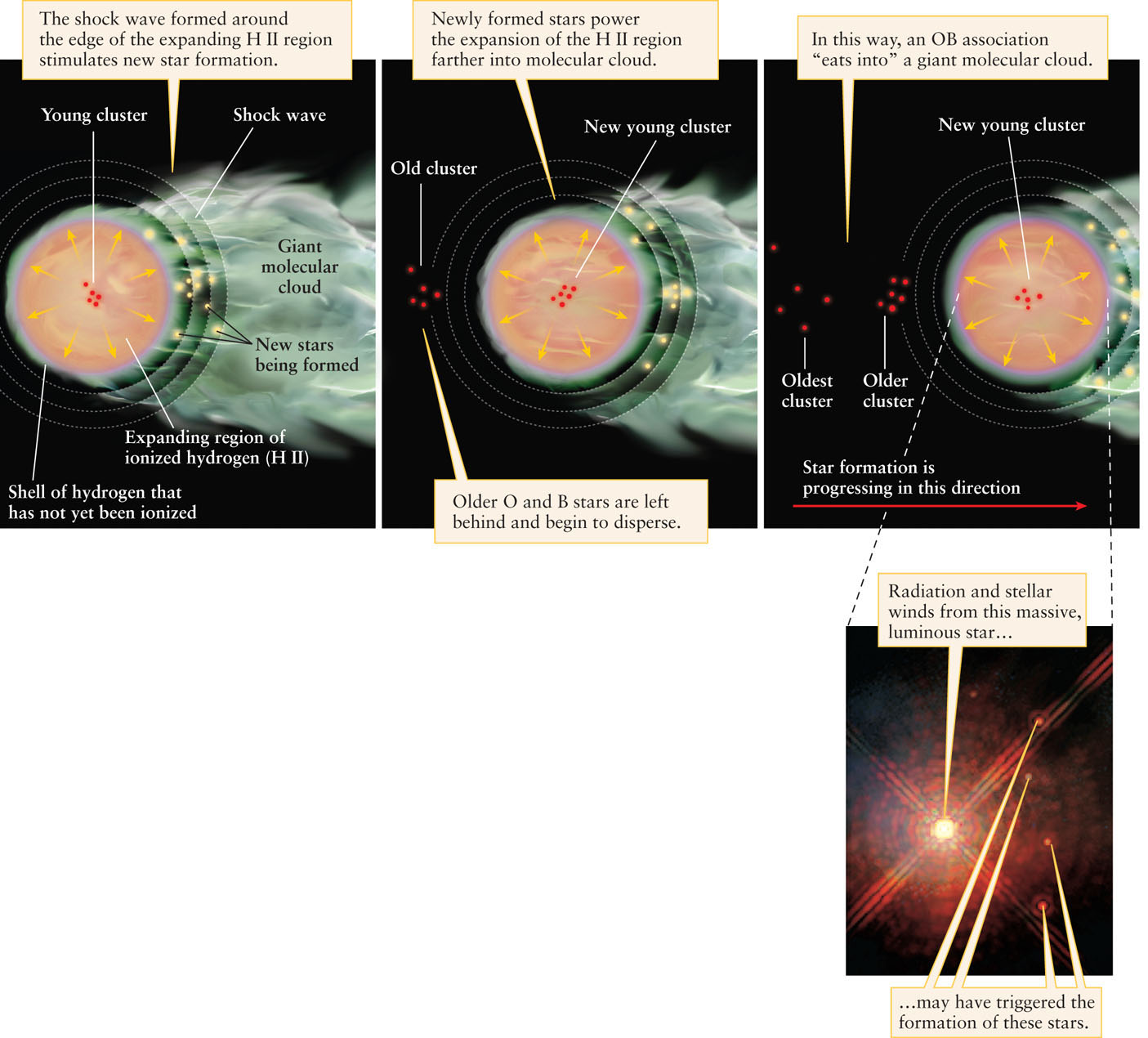
Figure 18-25: R I V U X G
How O and B Stars Trigger Star Formation Stellar winds and ultraviolet radiation from young O and B stars produce a shock wave that compresses gas farther into the giant molecular cloud. This stimulates star formation, producing more O and B stars, which stimulate still more star formation, and so on. Meanwhile, older stars are left behind. This figure only illustrates new star formation in the rightward direction, but it could be spherical in a real cloud. The inset shows a massive star that has spawned other, smaller stars in this way. These stars are about 770 pc (2500 ly) from Earth in the Cone Nebula, a star-forming region in the constellation Monoceros. The younger stars are just 0.04 to 0.08 ly (2500 to 5000 AU) from the central star.
How O and B Stars Trigger Star Formation Stellar winds and ultraviolet radiation from young O and B stars produce a shock wave that compresses gas farther into the giant molecular cloud. This stimulates star formation, producing more O and B stars, which stimulate still more star formation, and so on. Meanwhile, older stars are left behind. This figure only illustrates new star formation in the rightward direction, but it could be spherical in a real cloud. The inset shows a massive star that has spawned other, smaller stars in this way. These stars are about 770 pc (2500 ly) from Earth in the Cone Nebula, a star-forming region in the constellation Monoceros. The younger stars are just 0.04 to 0.08 ly (2500 to 5000 AU) from the central star.
(Adapted from C. Lada, L. Blitz, and B. Elmegreen; inset: R. Thompson, M. Rieke, G. Schneider, and NASA)